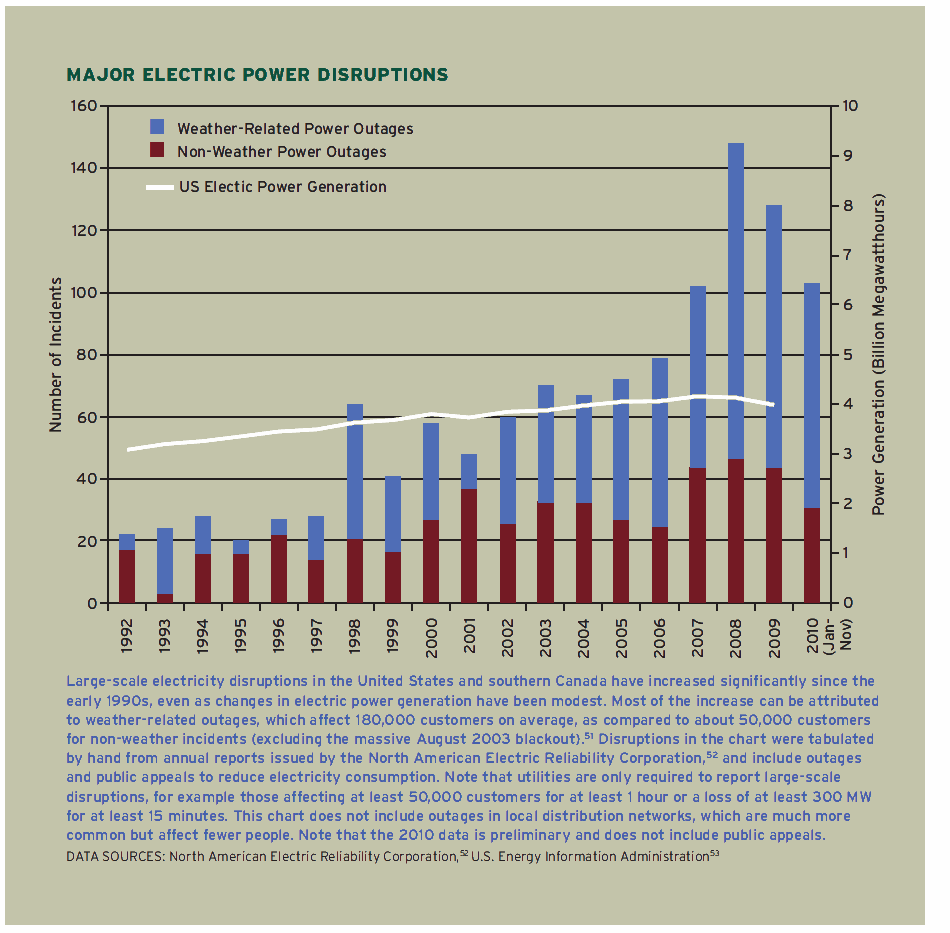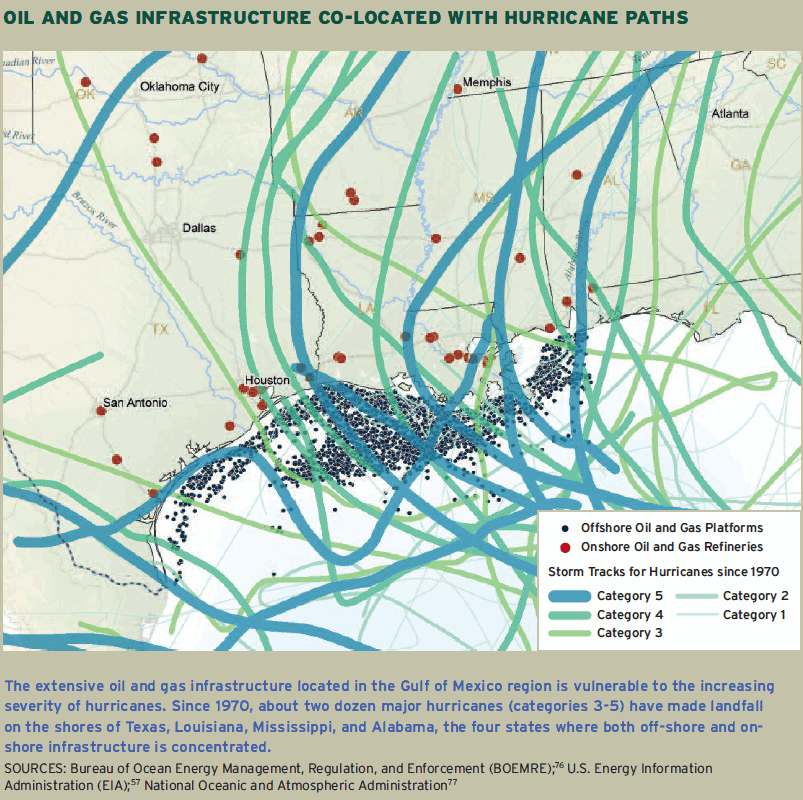NATIONAL WILDLIFE FEDERATION
Climate change is bringing more extreme weather. From more severe heat waves and droughts to more intense tropical storms and heavier rainfall events, this intensification will be the most apparent manifestation of climate change for many people in the United States. Weather-related disruptions cost the country $17 billion a year on average from 1960-2005.
Power outages are becoming more common. Major weather-related power outages have increased from 5 to 20 each year in the mid 1990s to 50 to 100 each year during the last five years. While changes in the electric transmission grid and maintenance practices might explain some of this increase, more frequent weather and climate extremes are also likely contributing.
Oil and gas infrastructure in the Gulf region is at risk as hurricanes intensify. Climate models project that hurricane wind speed will increase by 2 to 13 percent and rainfall totals by 10 to 31 percent over the next century. The approximately 4,000 offshore oil and natural gas rigs, 31,000 miles of pipeline, and more than 25 onshore oil refineries located in the Gulf region were built to meet the climate conditions of the past, not the future.
Coal transport across the Midwest and Northeast will face more flooding disruptions. Heavy rainfall events in these regions have increased by 31 to 67 percent since the 1950s, a trend that will continue this century. About 70 percent of coal is transported by rail lines that must navigate across or along rivers, providing another reason to reduce our reliance on coal.
Electricity generation in the Southwest will be limited by water shortages. About 89 percent of electricity in the United States is generated in thermoelectric power plants that require water for cooling. Water demand from the energy sector is projected to increase by 32 percent by 2030, while droughts are expected to become more frequent and severe.
Future investments must transform the U.S. energy infrastructure to be resilient in the face of more extreme weather and climate. We recommend that the nation undertake a detailed national climate vulnerability assessment for the energy industry and develop climate adaptation plans to address vulnerabilities. Furthermore, we must begin designing, strategically locating, and making investments in energy systems —– such as appropriately sited offshore wind and distributed photovoltaic solar —– that are more resilient to severe weather and climate disruptions.
Download full version (PDF): More Extreme Weather and the U.S. Energy Infrastructure
About the National Wildlife Federation
www.NWF.org
“The National Wildlife Federation is America’s largest conservation organization. We work with more than 4 million members, partners and supporters in communities across the country to protect and restore wildlife habitat, confront global warming and connect with nature.”
Tags: National Wildlife Federation, NWF, Weather








 RSS Feed
RSS Feed